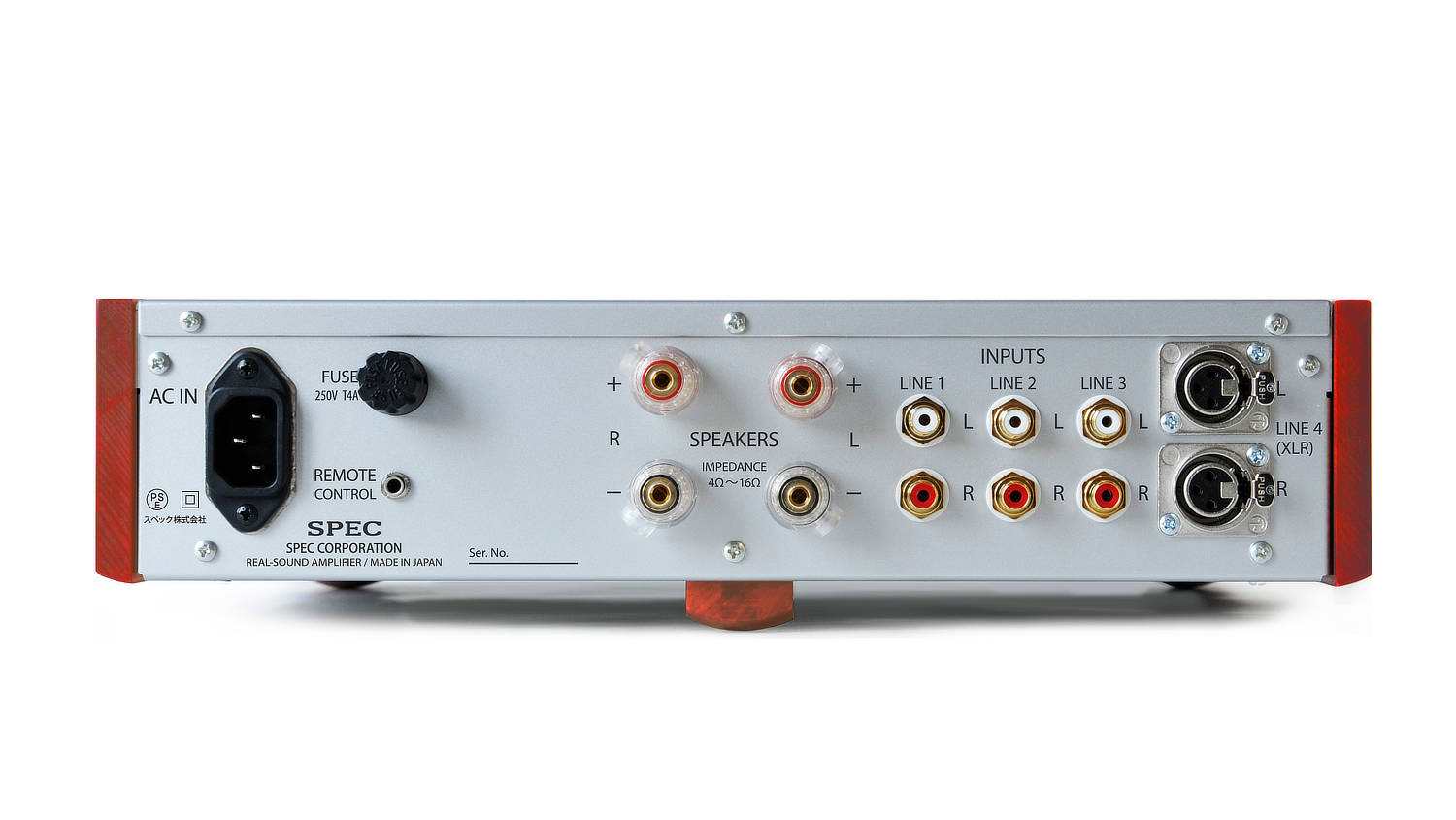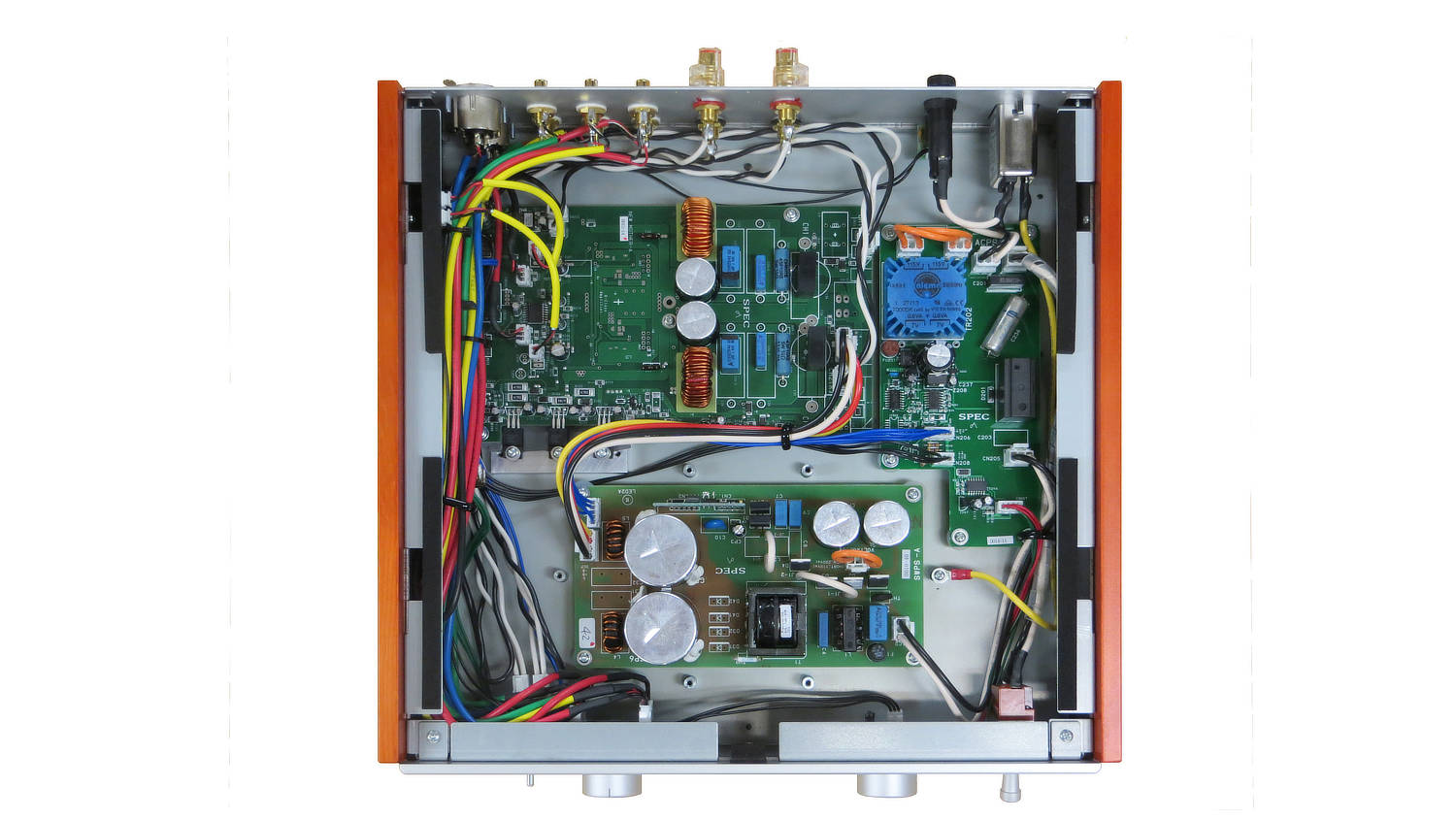RSA-777EX Integrated Amplifier




New "Real-Sound" - A great innovation of Audio-Amplifier
Real-Sound Amplifier has progressed towards the next stage.
Introducing the RSA-777EX
Our compact size Real-Sound Amplifier with Violin-like shaped side panels has progressed towards the next stage. RSA-777EX, its sound is based on the high definition sound of RSA-717EX, contributes to bring you more clear, more natural, and more musical sound.
RSA-777EX Integrated Amplifier Details
The technology driving the sound
The basic technologies of this lineup are Audio class switching power supply and Class D technology.
Energy flow to the speakers
These technologies send energy from AC-Input to speakers with greater speed. In addition, because the Class D has a high driving ability, it can drive speakers with pinpoint accuracy against counter-electromotive forces. This allows you to enjoy the playback of music as it was recorded, raw and untouched. This is what we refer to as Real Sound.
For the RSA-777EX we utilized Hibiki-Ichi capacitors in the Audio class switching power supply.
Hibiki-Ichi was developed with the goal of rapid response and natural tone in collaboration with world renowned capacitor manufacturer Nichicon. The Hibiki-Ichi brings out even more texture for a more musical sound.
You can see the Japanese Kanji on the surface of capacitor. This Kanji is pronounced as Hibiki-Ichi , and Hibiki means vibrancy.
Hibiki-Ichi
We further improved the Class D technology by using some newly adopted parts. Class D technology is extremely sensitive, and SPEC CORP compared many parts and found parts optimal in our pursuit of Real Sound. This newly improved Class D brings you all of the musical information, so you can hear all the subtleties in the recorded material. By means of these improvements, the RSA-777EX is able to reproduce higher musical resolution and more natural tonal characteristics. You will notice it is very close to live sound.
Metal Film Resistor
Our proprietary resistor developed in our quest for Real Sound. It’s an analog amplifier.
The myth that a Class D is a digital amplifier is incorrect. SPEC CORP. has adopted Pulse Width Modulation in our Class D. This PWM converts signal amplitude to duration switching through analog processing. This system doesn’t digitize the audio signal. This is in fact type of analog amplifier because magnitude resolution is infinite, same as in an analog amplifier. Class D with PWM contributes to bring you beautiful acoustical sound. In the past, some audio makers adopted delta sigma modulation for Class D this is quite simply 1 bit digital modulation.
Class D with PWM
Class D amplifiers create very little heat.
Class D amplifier controls output voltage by switching duration of MOSFET’s. Because the output device is only a switch, the power stage generates very little heat. There are zero ventilation holes on SPEC amplifiers. As a result of this fact, we can apply “real wood” for resonance control.
Energy Consumption
Multiply I (current) by V(voltage) equals zero
Wooden side panels and insulators realize acoustic instrument-like sound
Like a musical instrument maker, we carefully select materials, select the appropriate mechanism of connecting the lumber with the metal chassis, and combine different types of lumber. An amplifier which has a high gain is sensitive to rigidity and vibration, the use of a wooden structure provides suitable vibrational dampening properties. This is precisely why we claim that an amplifier is a musical instrument.
Only Maple supports the main chassis
Violin-like shaped wooden panel of RSA-777EX is the structure of sandwiching maple with spruce. Spruce dampen the vibration of chassis suitably and resonated with a music signal like a violin. As you know, “Spruce” is used in string instrument. The 3 dimensional form allows that only Maple supports main body. This design is fundamental in controlling resonance and damping. This brings out the beautiful sound of music. This example of Japanese craftsmanship originates in the historic town Hida-Takayama, known for its skilled wood-work and craftsmen.
Sealed Structure
Because the Class D system designed by SPEC Corp generates very little heat, the SPEC amplifier can have a sealed structure. There are no large heat sinks or cooling vents on the body of SPEC amplifiers. This means that no dust can enter. No dust and no heat cycle leads to operating reliability over a sustained period of time.
Technology within the Volume Control
Controlling amplitude is very important factor reproducing sound. A device of inferior quality will negatively impact sound quality. SPEC CORP. has adopted the electronic volume control device carefully. As indicated in the diagram below it is a completely analog circuit. The sound level is determined by a resistance ratio.
The mechanical volume knob located on the front panel only generates the control command; the audio signal doesn’t go through it. This is important for reproducing a minute signal stably. Conventional volume sometimes make the sound dull. By this system, the sound quality doesn’t vary depending upon the volume device itself. Additionally, you can enjoy great sound even if at small volume levels. In this manner, SPEC CORP. focuses on the analog processing and what to do with the analog circuit.
Headphones
RSA-777EX has an exclusive amplifier circuit that is designed for headphones. The power supply and Volume Control device are common in main amplifier. You can hear the realistic sound through your headphones in the same manner as same as main amplifier. This construction method creates a pure, realistic output to drive your headphones.
RSA-777EX Integrated Amplifier Reviews
Need more information?
Specifications
Amplifier
Maximum output
100 W × 2 (4Ω), 75 W × 2 (6Ω), 50 W × 2 (8Ω)
Frequency response
10 Hz – 30 kHz ±1dB (6Ω, 1W)
Harmonic distortion ratio
0.02% (at 1 kHz, 80% output)
Input sensitivity, gain
300 mVrms, 37.3 dB (at MAX volume, 6Ω, 1kHz, unbalanced input)
Line input terminals
XLR input : 1 RCA inputs : 3
Speaker terminal
1
Power supply, other
Power voltage
220V AC,50Hz
Electrical consumption
With no signal : 18 W,
during maximum output : 180 W (8 Ω, 100 Hz)
External dimensions 350 mm (width) × 95 mm (height) × 375 mm (depth)
Weight
7.0 kg
Included items
Power cord
1
Operation manual
1
